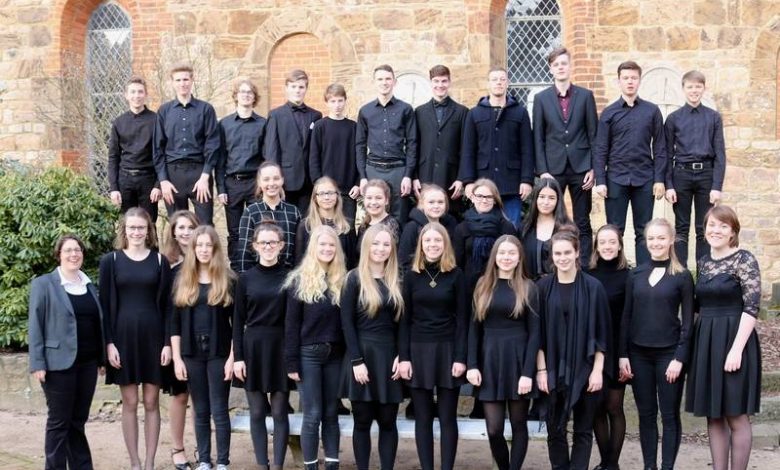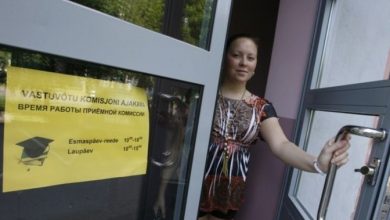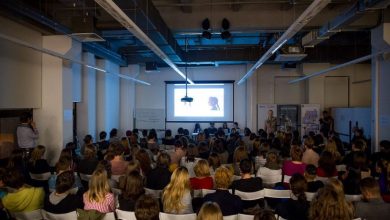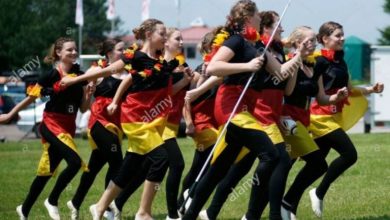Studying in Germany: not always easy, but tasteful
Do you know that several education systems coexist in Germany at once, among which are academic, professional and alternative? We will talk about whether there is one system throughout the country and what alternatives there are – for example, vocational training – in a special issue of the World of Knowledge program from Germany.
Federal education: power or fragmentation?
Education in Germany is built in accordance with the federal system – which means that each land can choose its own special approach and even conduct its own exams. What is the situation in practice, what are the pros and cons?
Patricia Casper recently began working as a teacher in Munich’s elementary school. The diploma of the pedagogical institute allows her to teach in high school, but she received it in the state of Brandenburg, and not in Bavaria, where she moved – and they do not recognize him here.
“When your diploma is not recognized, it’s supposedly“ not up to the mark ”, it’s all very depressing and, in fact, even looks like discrimination,” she says. “You pore over books, do internships, spend a lot of time and energy – and now, here you are, please …”
In the Federal Republic of Germany, education policy is determined not only by one state ministry, but, in fact, by 16 regional departments. The result is rivalry at the land level, as well as different standards and quality of education.
According to Ludwig Unger of the Bavarian Ministry of Education, “The federal states themselves determine the structure of education and the types of schools. Historically, this is connected with the past fragmentation of the country – in Germany there were many small states, and they themselves decided how they live and develop. “
For two years now, Patricia has been fighting for at least partial recognition of her Brandenburg diploma in Bavaria – this is a complex bureaucratic process, despite excellent marks:
It seems that I studied abroad – I need to send a request to the Ministry, they do not answer for a long time, then they ask me for additional documents, this is not the end and end.
In the largest German teachers’ union GEW, the case of Patricia is considered symptomatic of the federal system, leading to inequality and parochialism:
“This is simply unacceptable and, as they say, would be ridiculous if it were not sad,” said Elke Khan from the Bavarian branch of the union. “The teacher’s knowledge is not used at all, she herself isn’t developing at all, you can even talk about personal tragedy.”
The governments of Bavaria set each their own standards and increased competition, arguing that this guarantees the best results. However, 90% of German parents recently spoke in favor of speedy reform of the federal system.
Two in one
As we can see, the variety of approaches sometimes has its problems – but there are also successful examples. So, vocational training programs are becoming increasingly popular when a school takes 2-3 days a week, and the rest of the time is allocated to work at the enterprise.
Julian is a student at a vocational school: combining studies with work at a particular enterprise attracts more and more young Germans, according to some reports, up to half of them somehow go through the Berufsschule, as they are called here.
This so-called dual system is designed for those who are over 16: the details vary, but usually it’s a few days of study combined with work as an apprentice.
According to teacher Uwe Schmidt, “we are a public school, and the knowledge that we instill in our students extends far beyond just professional skills: we want to transfer to them not only technical knowledge, but also the experience of living in society.”
Such schools really include not only a technical education program – for example, Julian attends lectures on political science. On the other hand, four times a week, he and his classmates go to an IT company, where, helping programmers, he puts his knowledge into practice:
“The connection is also the opposite – at school I reinforce with the theory the skills acquired here,” he says. – Actually, this is not only lectures at school – we have a lot of practice in laboratories. But a combination of study and specific work is the best option.
To obtain a diploma, you must pass exams in theory and a technical workshop. Such training lasts from two to three and a half years. Part of the costs are covered by part-time students. The system, created back in the 18th century, is still relevant today, especially in the context of the fight against unemployment.
However, government expenditures are high – the machines used in such schools must meet the most advanced requirements. But here they believe that this is an investment in the future of students – for example, 80% of the graduates of this Berufsschule in Hanover find work.
Waldorf but not salad, but pedagogy
If this choice is not enough for you, in Germany there are other alternative schools: for example, those that follow the path of Waldorf pedagogy, where traditional reading, writing and writing are combined with less academic skills. However, the system has its own critics, who consider it rather spiritual than educational.
At the beginning of the school day, songs and eurythmic dances are not unusual for these children: in Waldorf schools, physical expression or creative practice is just as important as learning to read and write.
However, children move in a math lesson, and there are no textbooks or pens here.
The first school, based on the ideas of Rudolf Steiner, an Austrian philosopher and esotericist, creator of anthroposophy, opened in 1919. Now in Germany there are more than 200 kindergartens or Waldorf-Steiner pedagogy schools. Anthroposophy, in the words of its creator, is “a scientific study of the spiritual world, which is seeing the one-sidedness of both simple natural science and ordinary mysticism.” Not everyone has such pedagogy to their taste:
“There are a lot of families,” says teacher Andre Sebastian, “who throughout their studies at the Waldorf school have not noticed any anthroposophy, because sometimes it is combined with such an underlying indoctrination.” Many obviously anthroposophical elements in this pedagogy are not directly called such.
Proponents of this theory argue that they do not conduct any indoctrination, but only give students the necessary context for learning:
“Actually, anthroposophy is a tool for teachers to help them release creative energy,” says Henning Kullack-Ublick, a representative of the Waldorf Schools Association. “But at the same time, this is not a subject of instruction in the classroom – we do not set ourselves the task of raising small anthroposophists.” our goal is to form a human being with free will.
However, discussing Waldorf schools “in general” is rather difficult – they follow general principles, but each of them is independent. Moreover, they do not use any single textbooks, and teachers adjust a certain general program to the temperament and characteristics of students. Usually teachers “lead” the class for 8 years. Waldorf educators compare class with family. Accordingly, the teachers here enjoy great freedom – but they also have a great responsibility.
This post is also available in:
 English
English  Русский (Russian)
Русский (Russian)






